There’s nothing more ANNOYING than a chainsaw chain that keeps getting dull!
I know the feeling!
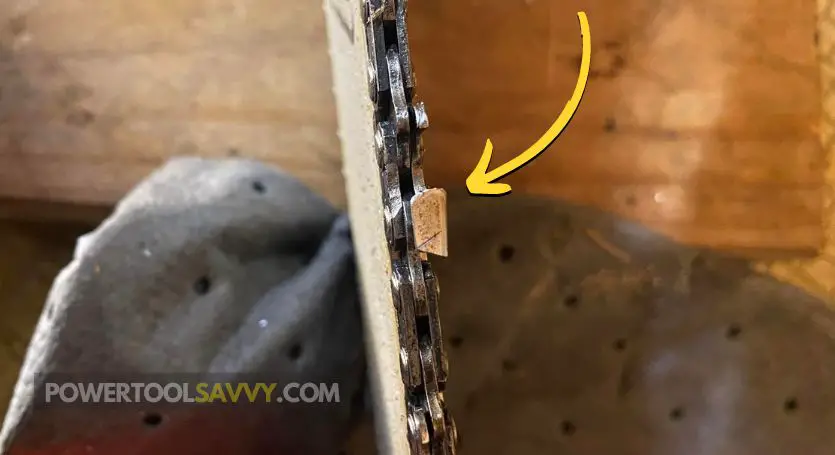
But what causes a chainsaw chain to get dull so quickly?
Cutting hardwood, hitting the ground, and cutting through dirt are the main reasons why a chainsaw chain gets dull faster. Also, incorrect sharpening, and a faulty chain lubrication system can harm the chain and make it dull quickly.
I’ve more than 20 years of experience with chainsaws. And in this article, I’m going to explain each of the reasons in more detail.
Are you READY??
Let’s jump right in…
Table of Contents
Toggle5 Reasons Why Your Chainsaw Chain Gets Dull Faster
Here are 5 reasons why your chainsaw chain gets dull faster:
1. The Rakers on Your Chain Might Be Set Too Low
If you’ve filed down the rakers on your chainsaw chain way too far, it can lead to premature dullness.
Here’s what you need to know: 👇
Every cutting teeth on a chainsaw chain has a raker (also referred to as the “depth gauge“) that sits right in front of it.
The height difference between the raker and the cutting teeth is called the “raker clearance” (as shown in this illustration: 👇).
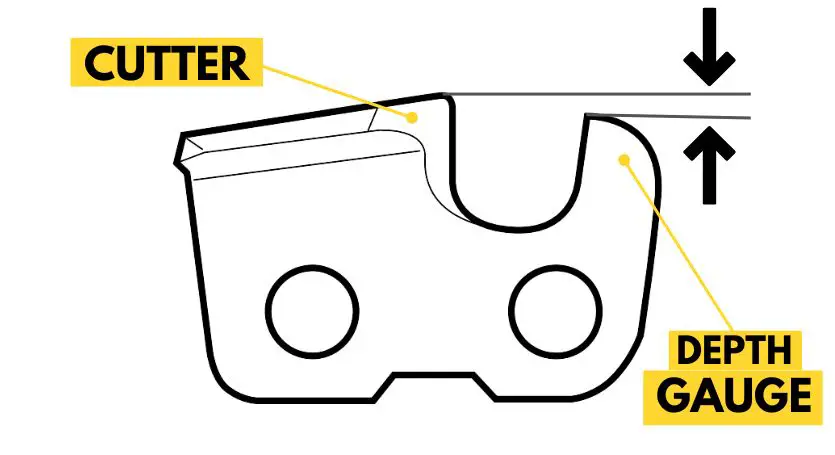
The rakers act as a depth gauge, and the raker clearance determines how deep the cutting teeth will bite into the wood.
But if the rakers are set too low, it’ll cause the cutting teeth to bite excessively deep into the wood, putting more stress on the chain and leading to a much faster dulling of it.
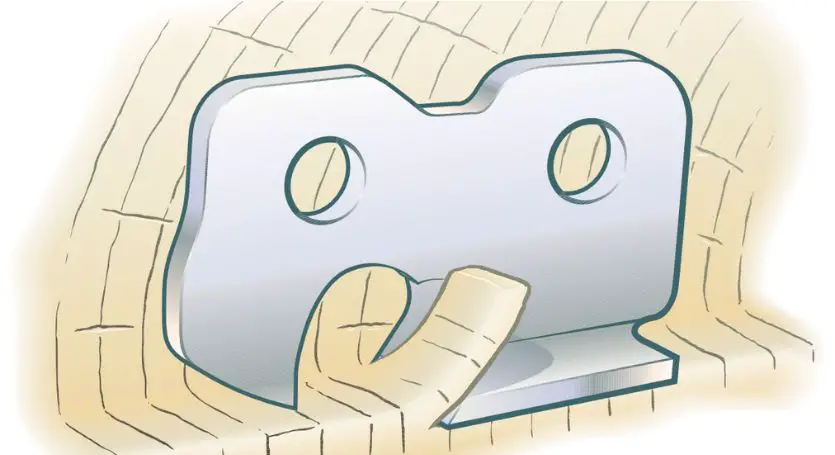
And you know what! It’s a common chain sharpening mistake, even among experienced users.
People often focus on getting those teeth sharp and clean but forget to pay attention to those rakers.
So, what’s the ideal raker clearance for a chain?
Well, the recommended raker clearance on most chainsaw chains is between 0.025″ to 0.030″.
I personally use a depth gauge tool to stay within that range and keep things on point.
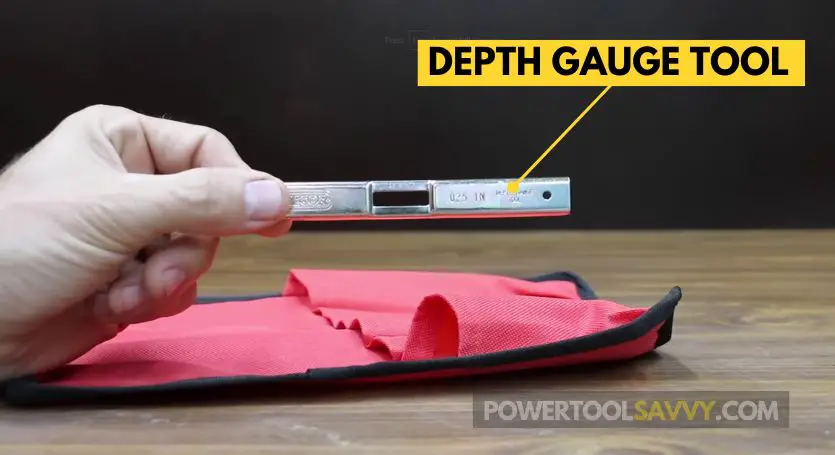
2. You're Mostly Cutting Hardwood
Chainsaws are AWESOME!
They can literally cut through anything you throw at them like BUTTER, right?
Well, not entirely!
When it comes to cutting softwoods like cedar, redwood, pine, fir, or spruce, a regular chainsaw chain can handle it like a real champ!
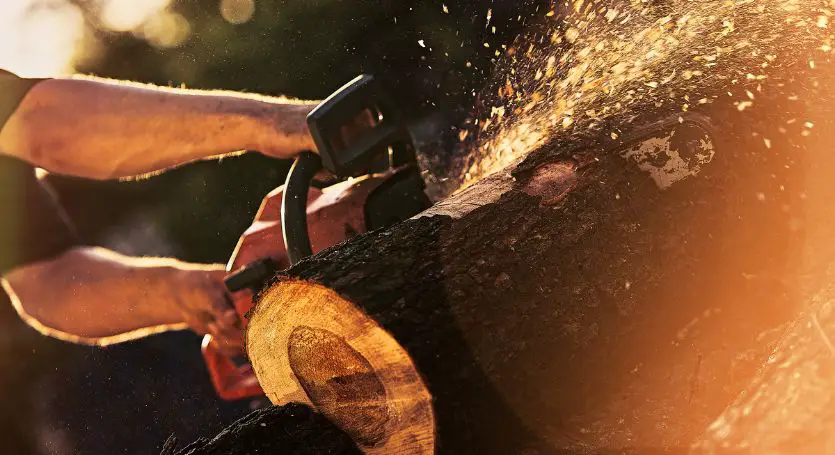
But when you move on to those harder woods like oak or maple, your chain starts feeling the stress. And as a result, you’ll find yourself sharpening it more often than usual.
The reason behind this is that, the wood fibers in hardwoods are tougher, denser, and harder to cut than the softer woods.
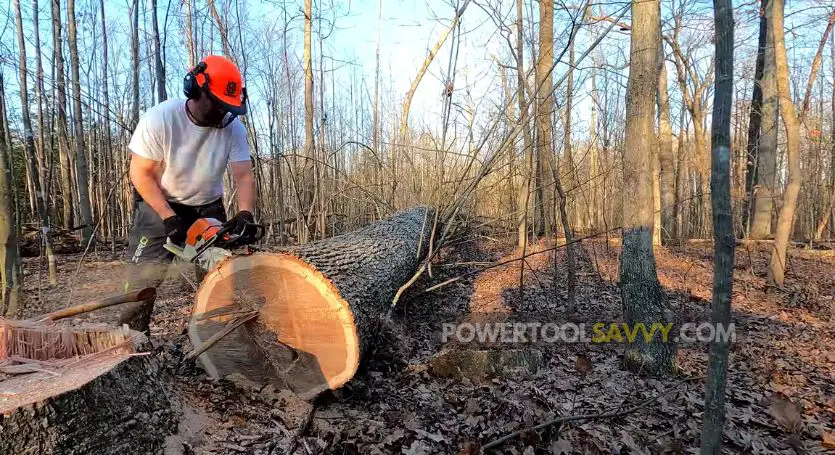
Over here in Ohio, I mainly deal with Australian hardwood, and guess what? I’m filing those teeth down roughly every half tank of fuel.
3. Letting the Tip of Your Chainsaw Touch the Ground
Many folks (especially those beginners) make this mistake!
But do you know what?
When your chainsaw makes contact with the ground, it’s not just the soil it’s dealing with; there’s dirt, gravel, rocks, and tons of other abrasive materials, which can dull your chain teeth in a matter of seconds.
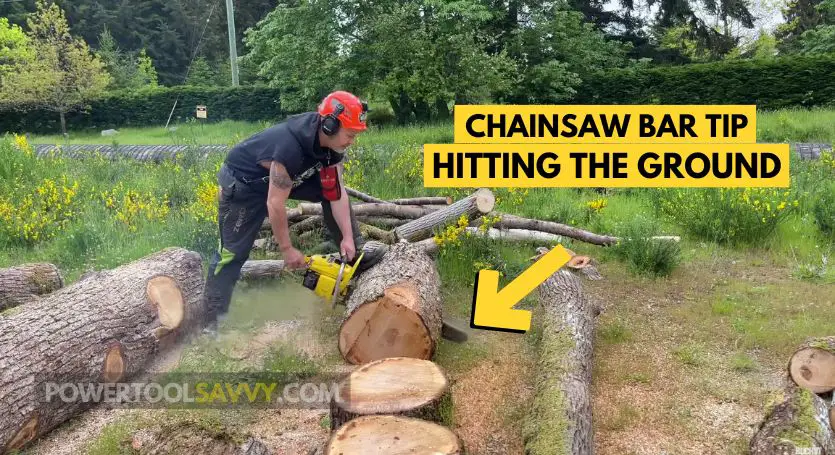
That’s not all!!
When your chainsaw touches the ground, damp soil and dirt can easily get stuck between the rivets, clogging the chain and making it run “sluggish”.
So, next time you’re cutting, make sure the tip of your chainsaw doesn’t come closer to the ground.
PRO TIP: Avoid cutting logs that are lying on the ground. Instead, raise them a bit by putting some smaller logs underneath.
This will give some extra space, and make sure that your saw doesn’t touch the ground when you finish the cut.
And I’d strongly recommend using the cross-cutting technique in such situations.
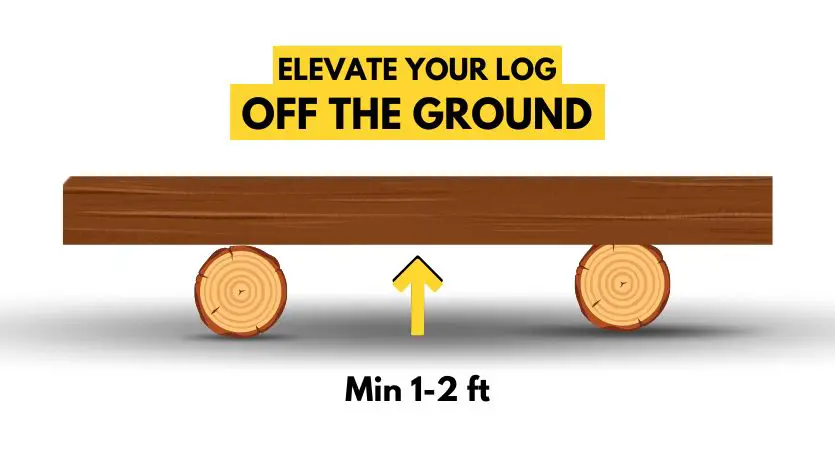
Related Articles:
4. Your Chainsaw isn't Oiling Properly
Here’s what you need to know: 👇
Every chainsaw out there has got an oiling system, and it’s sole purpose is to keep the bar and chain well-lubricated.
But why is this so important?
Well, chainsaw chains and bars are made from steel. This is why they tend to get extremely HOT during use, potentially leading to damage and faster chain dullness.
And this is where the oiling system comes into play!
It pumps oil right onto the chain & bar, keeps them lubricated and cool, and prevents overheating. 🔥

So, if your chain is losing its edge every 15 minutes and your saw starts puffing out smoke when you rev it up, it’s a good idea to give the oiler a nice check-up.
Here’s a quick way to check if your saw is oiling or not:
- Point the tip of your bar at a light-colored surface, like dry wood, grey concrete, or cardboard, and keep it about 2-3 inches away from the surface.
- Fire up your saw, and let it run for 15-20 seconds. Then, give it some throttle.
- If you spot oil droplets on the surface (just like in the image below), your saw is oiling fine. If not, well, your saw isn’t doing its oiling job. Check out this article to fix your saw’s oiling issue.
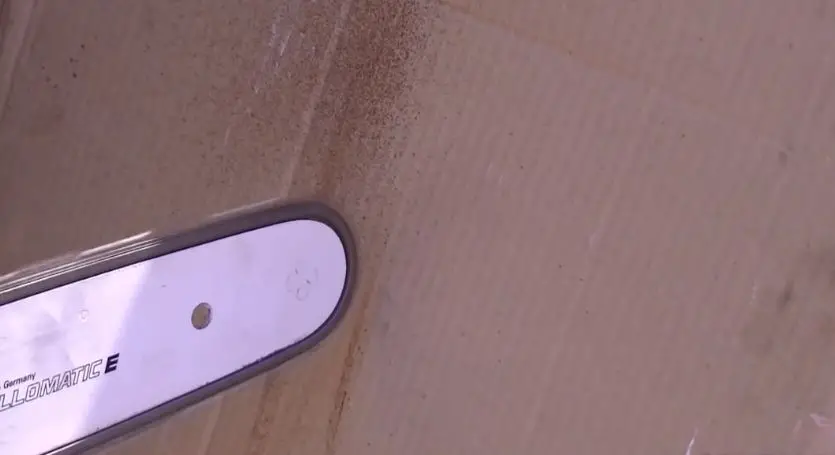
5. You're Not Sharpening the Chain Correctly
Sharpening a chainsaw chain is an ART! (and something that I’m still learning)
Even the BEST of us make mistakes. You need to be extremely precise and make sure everything is on point!
If you don’t do a GOOD job, it’s quite obvious that the chain won’t stay sharp for long!
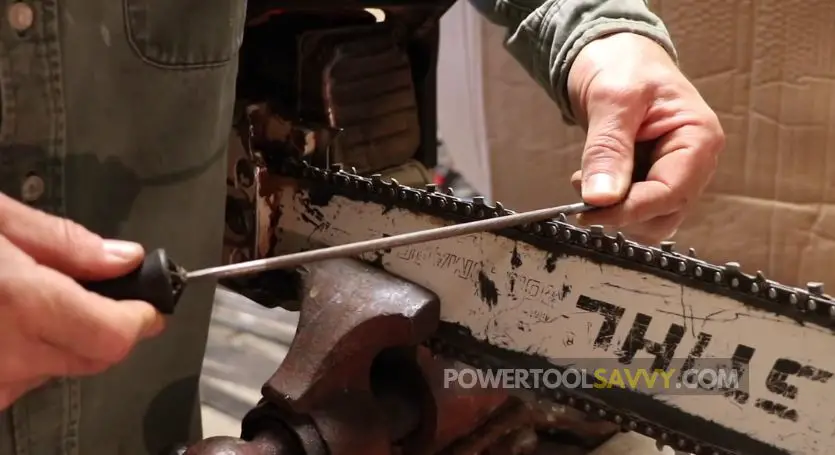
Here are 6 common mistakes that people usually make while sharpening their chains:
- Not setting the rakers to the right height.
- Not maintaining a consistent angle while sharpening.
- Using the wrong file.
- Using a dull file.
- Sharpening one side than the other (this can make your saw cut “crooked”)
- Failing to identify a dull chain (here are the 7 signs of a dull chain)
Here’s a video tutorial that explains the sharpening process in great detail:
However, if you’re NOT confident enough to do it yourself, I’d recommend getting your chains sharpened by a professional service. It might cost you 5-10 bucks per chain.
How can You Tell if Your Chainsaw Chain is Dull?
Doesn’t it sound CRAZY?
6 out of 10 chainsaw users don’t actually know when their chain is dull. They continue sawing away until their chain gets completely “ripped-off”.
Here are 4 signs of a dull chain: 👇
- The saw struggles to cut through the wood – If you find yourself applying extra force to make the saw cut, it’s a sign that the chain has lost its edge.
- Your saw produces fine powdery sawdust instead of solid wood chips (like shown in the image below).
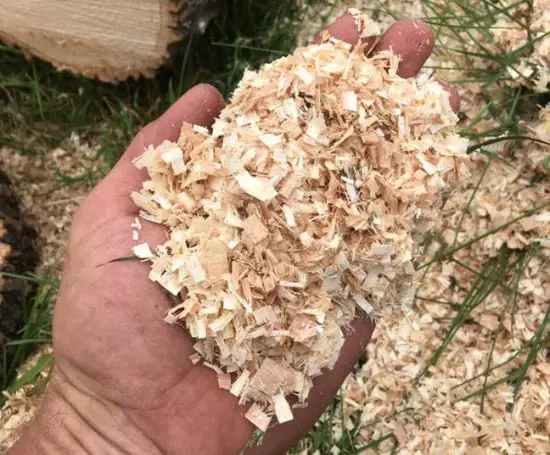
- Your saw cuts crooked – If you’re having a hard time getting those “straight” cuts, you should give your chain a nice check-up.
- Your saw starts to smoke when cutting – When a chain is dull, it can’t efficiently cut through wood. Rather, it generates a lot of friction and smoke when cutting.
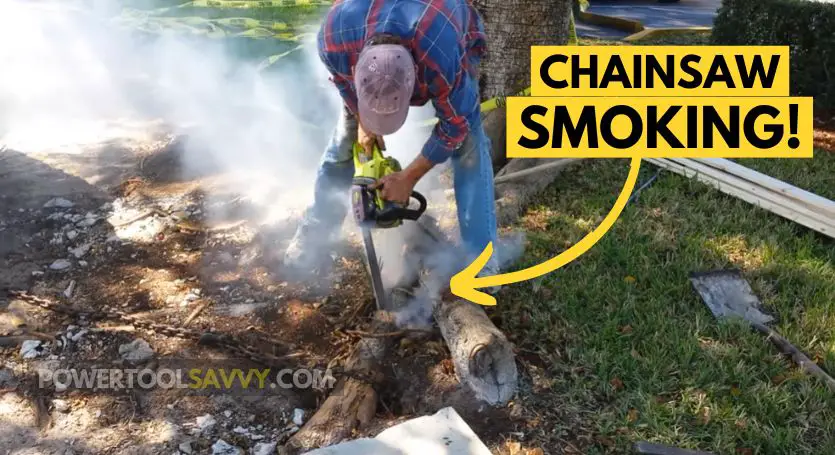
How Long Should a Chainsaw Chain Last Per Sharpening?
On average, a chainsaw chain should last 2-3 tankfuls of fuel before needing to be sharpened again. However, if you’re mostly cutting hardwood, you might need to sharpen it once every tankful of fuel.
I created a post in our Reddit Community, where I asked the users how long their chainsaw chains typically last per sharpening.
And tbh, the responses I received were really insightful!
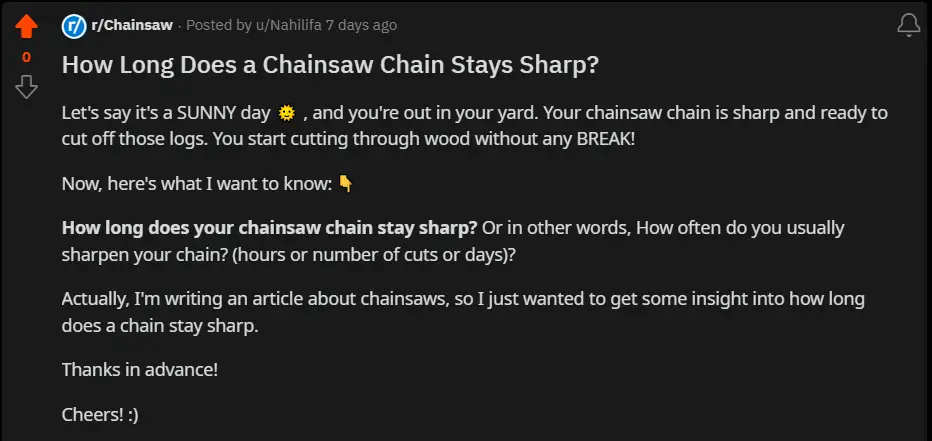
Rick said –
“I touch up my chain after every tank of gas. It only takes a couple of minutes, and it keeps the chain from getting severely dull because once it gets that way, they’re really hard to fix.”
I also do the SAME because I don’t want to risk my chain getting too dull.
Here’s what Kevin had to say (that I totally AGREE with): 👇
“It depends on a number of factors, including what you are cutting (green vs dry, hardwood vs softwood).
If you touch up the chain every tank (of fuel) in “dulling conditions” and every 2-3 tanks in good conditions you’ll maintain consistent cutting, and save yourself a lot of work at the end of the day.”
So, depending on your cutting scenario, you should check your chain every tank or two to ensure it’s always in TOP shape!
And btw, I’ve written an entire article on how frequently a chainsaw chain should be sharpened. Check that out for a more in-depth guide!
Which Chainsaw Chain Stays Sharp the Longest?
Carbide chainsaw chains tend to stay sharp the longest, which is why they’re mostly used by professionals.
They feature carbide-tipped cutters that can easily last 5-10 times longer than traditional steel chains.
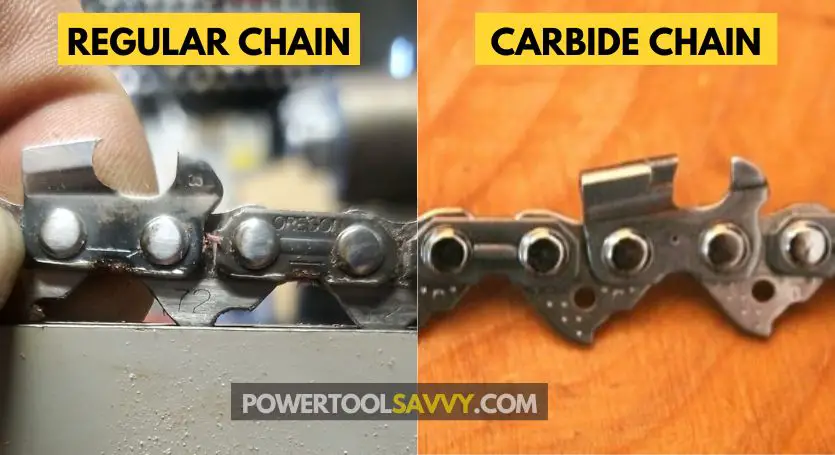
Hmmm..
They look exactly like regular chains, but they can make a BIG difference in terms of durability and safety!
But can I be totally honest with you??
I personally don’t think carbide chains are worth it! (Why?)
- First of all, carbide chains are harder to sharpen manually. And every time you get a carbide chain sharpened by a professional service, it could easily set you back by $20 or more (depending on the size).
- Secondly, these chains are HELLA expensive. A GOOD quality carbide chain could cost over $100.
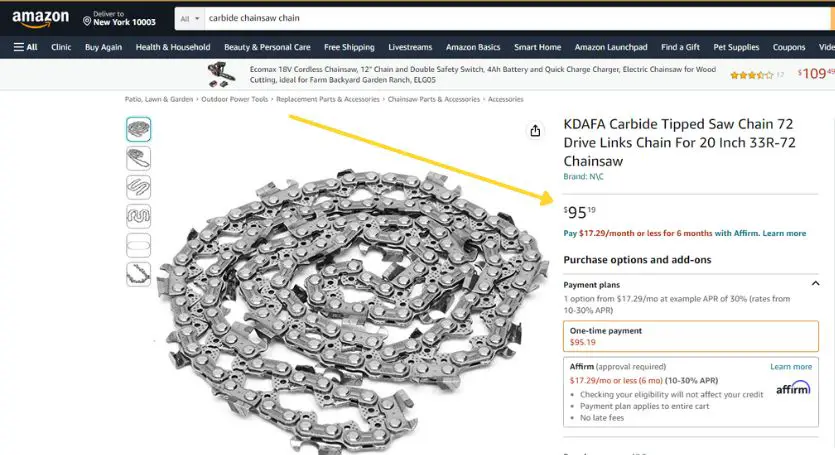
Is It Better to Sharpen a Chainsaw Chain or Buy a New One?
If your chain is badly damaged, or the cutting teeth have worn down to less than 4 mm, it’s time to buy a new chain. But, if the teeth are dull, not damaged, then you just need to sharpen them.
You might have noticed that the cutting teeth on your chain have an engraved line that tells you when the teeth are too short to be sharpened.
(Here’s what I’m talking about:)
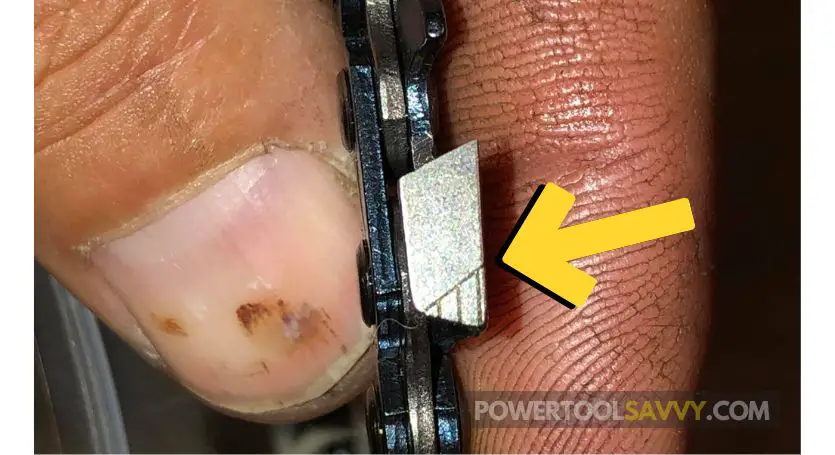
So, if you’ve reached this line, you should stop grinding the chain anymore and buy a new chain.
Otherwise?
No need to rush for a new chain! You can keep using the current one!

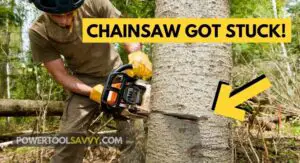

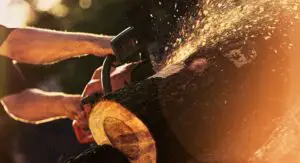
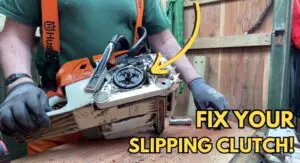
Pingback: Does Dirt Dull a Chainsaw Chain? (Spoiler: YES, Here's Why)